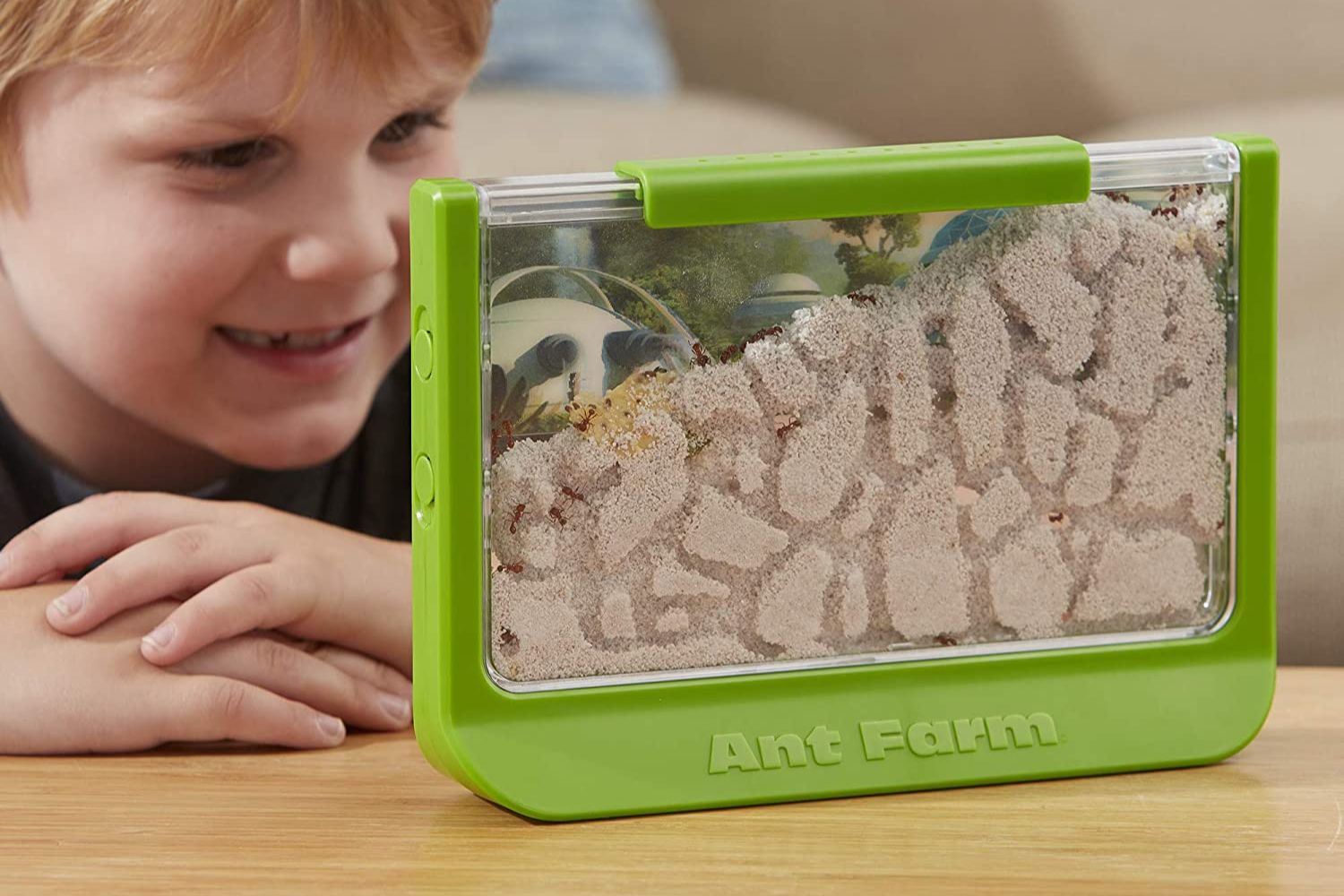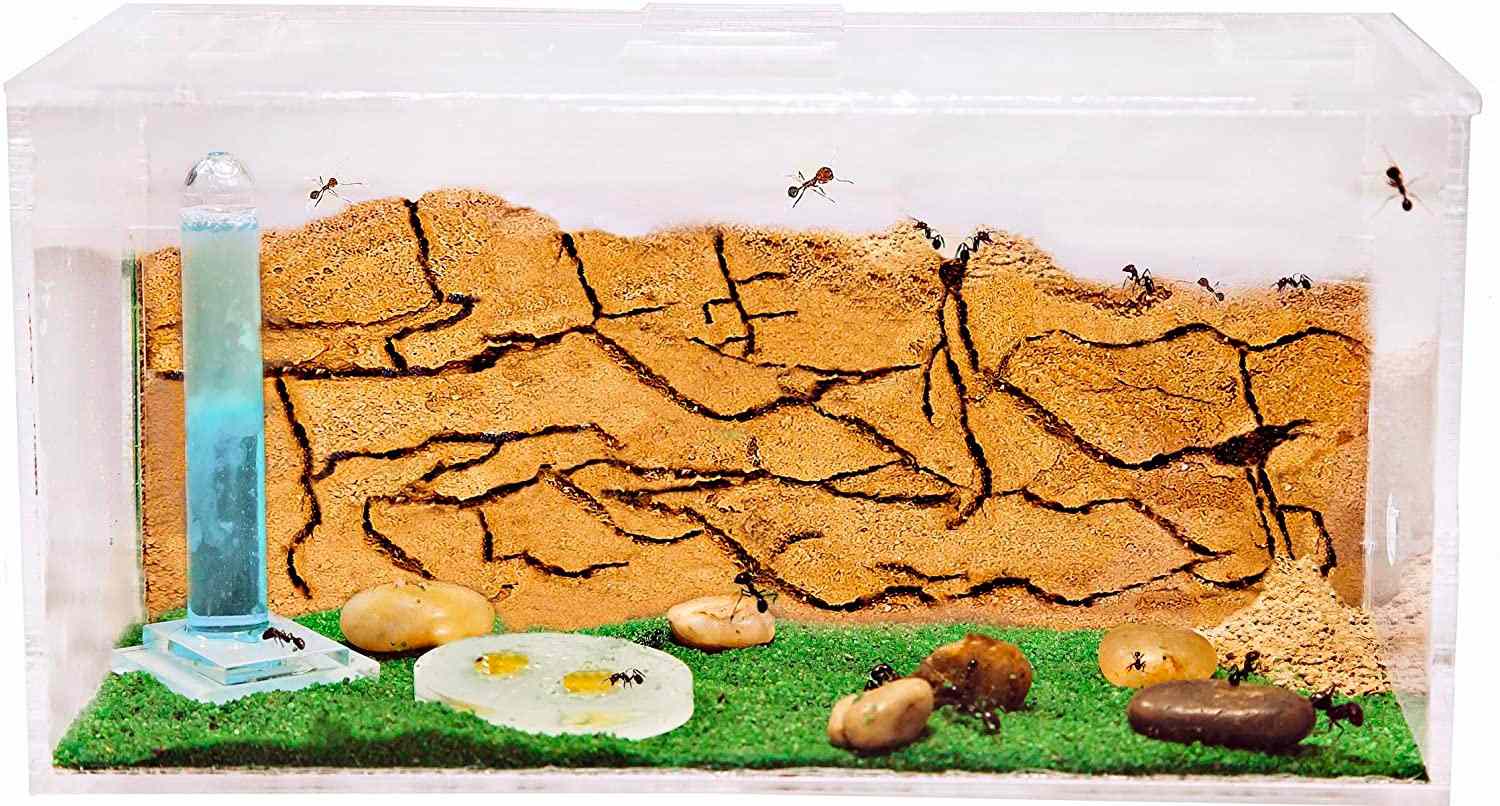Ant farms have long been a fascinating and educational way to observe the intricate world of ants. These captivating miniature habitats allow us to witness the industrious nature of these tiny creatures as they build intricate tunnels and colonies. However, when it comes to choosing an ant farm, size matters. In this article, we will explore the importance of selecting the right size for an ant farm and provide insights into creating a suitable environment for your ant colony.

Understanding Ant Colony Sizes
Ants come in a variety of species, each with its own unique characteristics and colony sizes. Some ant species have relatively small colonies with only a few dozen members, while others can have colonies numbering in the thousands or even millions. Understanding the average colony size of the ant species you intend to house is crucial in determining the appropriate size for your ant farm. Additionally, factors such as available resources and environmental conditions influence ant colony growth and expansion.
The Ideal Habitat for Ants
To ensure the well-being and productivity of your ant colony, it is important to replicate natural conditions as closely as possible within the ant farm. Providing suitable living conditions includes mimicking factors such as temperature, humidity, lighting, and substrate. By recreating these conditions, you can create an environment that promotes optimal ant health and colony growth.
Minimum Space Requirements for Ant Farms
While ants are adaptable creatures, they still require adequate space to thrive. Crowding can lead to stress and behavioral issues within the colony. Determining the minimum space requirements for your Ant Farm depends on factors such as the species, the number of ants you plan to house, and their natural behavior. By providing sufficient space, you allow the ants to exhibit their natural behaviors and reduce the risk of conflicts arising from overcrowding.
Factors to Consider When Choosing Ant Farm Size
When selecting the size of your ant farm, several factors should be taken into consideration. Firstly, consider the number of ants you plan to house. If you intend to start with a small number of ants but have plans for expansion, it is important to choose a farm that can accommodate the growing population. Additionally, different ant species have varying growth potential, so researching the specific species you wish to keep will help determine their long-term space requirements. Furthermore, ensuring sufficient foraging and nesting areas within the ant farm is essential for meeting the needs of your ant colony.
Small-Scale Ant Farms
Small ant farms have their advantages and disadvantages. They are compact and easy to maintain, making them ideal for those with limited space or for beginners. However, it is crucial to choose ant species that are well-suited for small-scale habitats, as some ants require more space to thrive. Balancing the available space and the resources provided within a small-scale ant farm is key to creating a healthy and harmonious environment for your ants.
Medium to Large Ant Farms
Larger ant farms offer several benefits, particularly for those who wish to observe more complex behaviors and have the ability to house larger ant populations. With more space, ants can exhibit their natural behaviors more freely. However, managing the space requirements for growing colonies becomes vital to ensure the overall well-being of the ants. Proper ventilation, humidity control, and providing ample foraging areas become even more critical in larger setups.
DIY vs. Pre-Made Ant Farms
Choosing between building your own ant farm or purchasing a pre-made one is a decision that depends on personal preferences and skill levels. Building your own ant farm allows for customization and can be a rewarding DIY project. However, it requires careful planning and attention to detail to ensure the ants’ needs are met. On the other hand, commercially available ant farms offer convenience and often come with features designed to promote ant health and ease of maintenance.

VI. Scaling Up: Expanding Ant Farms
Expanding your ant farm can be an exciting endeavor as you witness the growth and development of your ant colony. However, it requires careful planning and consideration to ensure a successful transition. Here are some strategies to help you scale up your ant farm:
Assessing the Current Situation
Before expanding, evaluate the existing conditions within your ant farm. Consider factors such as colony size, available space, and resource availability. Understanding the current state of your ant colony will guide you in determining the appropriate steps for expansion.
Creating Connecting Habitats
One effective method of expanding an ant farm is by creating connecting habitats. This involves providing additional enclosures or connecting tubes that allow ants to move between different sections. Connecting habitats not only offer more space but also promote exploration and foraging opportunities for the ants.
Managing Food and Water Sources
With a larger ant colony, it becomes crucial to ensure an adequate supply of food and water. Strategically place food stations and water sources in different areas of the expanded ant farm to prevent overcrowding and competition among ants. Consider using gravity-fed water systems or hydration chambers to provide a continuous water supply.
Maintaining Ventilation and Humidity
As your ant farm grows, proper ventilation and humidity control become even more important. Ensure adequate airflow within the expanded setup by incorporating ventilation systems or using breathable materials. Monitoring and maintaining optimal humidity levels through misting or using humidity-regulating devices will contribute to the overall health of your ant colony.
Monitoring and Observing
As you expand your ant farm, closely monitor the behavior and well-being of your ants. Observe their nesting preferences, foraging patterns, and overall activity levels. This information will help you make any necessary adjustments to ensure the expanded space meets their needs.
Addressing Challenges
Expanding an ant farm may present challenges such as maintaining a balanced ecosystem, preventing escapes, or managing potential aggression between ants. Address these challenges by implementing appropriate barriers, conducting regular inspections, and providing suitable hiding spots or territories within the expanded setup.
Gradual Expansion
It is important to remember that expanding an ant farm should be done gradually. Sudden, drastic changes can cause stress and disrupt the delicate balance within the colony. Introduce new sections or habitats in stages, allowing the ants to acclimate and adjust to the additional space.
Seeking Expert Advice
If you are unsure about expanding your ant farm or encounter difficulties during the process, consider seeking advice from experienced ant keepers or entomologists. They can provide valuable insights and guidance tailored to your specific ant species and situation.
Conclusion
Expanding an ant farm requires careful planning, attention to detail, and a thorough understanding of your ant colony’s needs. By assessing the current situation, creating connecting habitats, managing resources, ensuring proper ventilation and humidity, and closely monitoring your ants’ behavior, you can successfully scale up your ant farm. Remember to proceed gradually and seek expert advice when needed. With the right approach, you can provide your ant colony with a spacious and thriving
